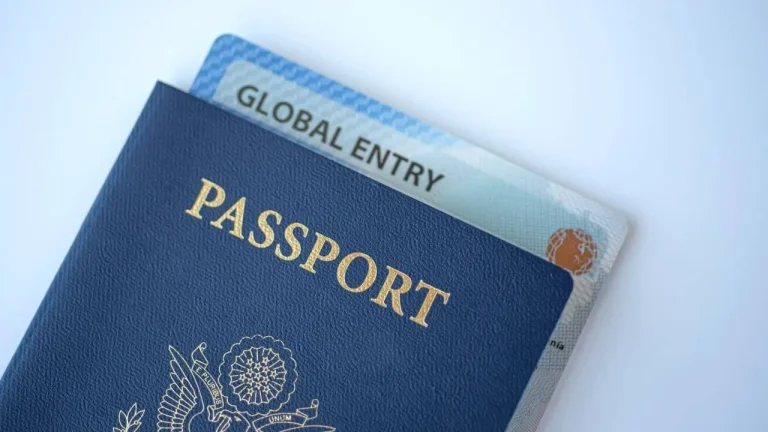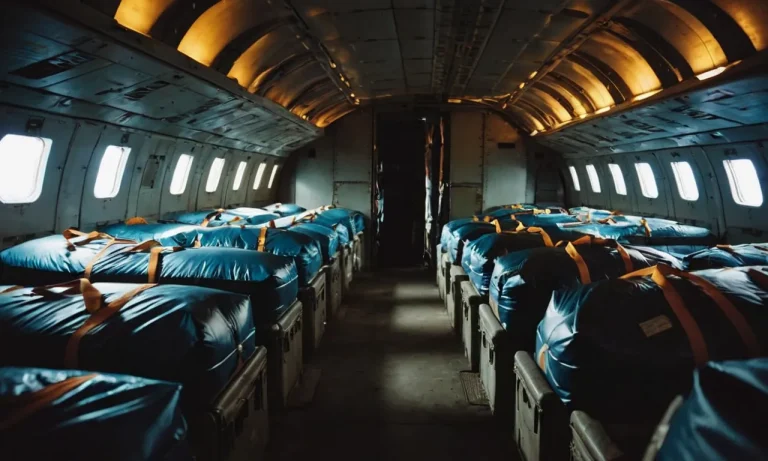If you’re looking to stay warm and cozy on your next flight, you may be wondering if you can pack hand warmers in your carry-on bag. The short answer is yes, you can bring disposable hand warmers on a plane without any issues.
However, there are some important rules and restrictions to keep in mind concerning hand warmer safety and TSA guidelines.
In this comprehensive guide, we’ll cover everything you need to know about bringing hand warmers on an airplane.
Here’s a quick answer if you’re short on time: Most airlines allow you to pack disposable hand warmers in your carry-on or checked luggage.
However, they must follow TSA rules, which prohibit certain types of hand warmers that contain prohibited materials like liquid fuel.
Your hand warmers should be the air-activated kind that don’t require any batteries or water. Always check with your airline before traveling with hand warmers.
TSA Rules for Hand Warmers
When it comes to traveling with hand warmers, it’s important to know the rules set by the Transportation Security Administration (TSA).
Understanding what is allowed and what is prohibited can save you time and prevent any issues at the airport security checkpoint.
Allowed Types of Disposable Hand Warmers
The TSA allows travelers to bring disposable hand warmers in both their carry-on bags and checked luggage. These small packets of warmth are a popular choice for outdoor enthusiasts, especially during colder months.
They are typically activated by shaking or exposing them to air, and can provide hours of warmth.
Disposable hand warmers contain materials such as iron powder, charcoal, salt, and vermiculite, which react with oxygen to produce heat.
These types of hand warmers are considered safe and pose no threat to airline security.
However, it’s always a good idea to check the manufacturer’s instructions and packaging for any specific guidelines or warnings.
Prohibited Hand Warmer Ingredients
While most disposable hand warmers are allowed, there are some ingredients that are prohibited by the TSA.
These include any hand warmers that contain flammable substances, such as lighter fluid or gasoline.
These types of hand warmers are not permitted on airplanes due to the potential fire hazard they pose.
It’s important to note that reusable hand warmers, which are often heated by a chemical reaction or rechargeable battery, are subject to different regulations.
These types of hand warmers may be considered hazardous materials and may not be allowed on airplanes.
It’s always best to check with the airline or TSA before attempting to bring these items on board.
Airline Policies on Hand Warmers
When it comes to traveling with hand warmers, most airlines are quite accommodating.
These compact and convenient gadgets are a popular choice for those seeking warmth during chilly flights.
However, it is essential to be aware of the specific policies and regulations set by each airline to ensure a hassle-free journey.
Most Allow Disposable Hand Warmers
The majority of airlines allow passengers to bring disposable hand warmers on board.
These small packets of warmth are typically filled with natural ingredients such as iron powder, activated charcoal, and salt.
They provide a consistent heat source for several hours, making them ideal for long flights or cold destinations.
It’s always a good idea to pack them in your carry-on luggage, as the temperature inside the cabin can often drop.
Disposable hand warmers are considered safe and non-toxic, making them permissible to bring on planes.
However, it’s important to note that some airlines may have restrictions on the number of hand warmers allowed per passenger.
To avoid any surprises at the security checkpoint, it is recommended to check your airline’s specific guidelines before packing your bags.
Restrictions on Liquid-Based Warmers
While disposable hand warmers are generally accepted, it’s important to be aware of the restrictions on liquid-based warmers.
These types of hand warmers typically require activation by bending a metal disk, which initiates a chemical reaction, resulting in heat generation.
As a result, liquid-based hand warmers may not be allowed in either carry-on or checked baggage.
To avoid any inconvenience, it is strongly recommended to check the airline’s specific guidelines before bringing liquid-based hand warmers.
Choosing the Best Hand Warmers for Air Travel
When it comes to air travel, staying warm during the journey is essential, especially if you’re traveling to a colder destination.
Hand warmers can be a great solution to keep your hands cozy and comfortable throughout the flight.
However, there are some important considerations to keep in mind when choosing hand warmers for air travel.
Look for TSA-Compliant Hand Warmers
The Transportation Security Administration (TSA) has specific guidelines regarding what can and cannot be brought on a plane.
It’s important to choose hand warmers that comply with these regulations to avoid any issues at the security checkpoint.
Look for hand warmers that are labeled as TSA-compliant or approved for air travel. These hand warmers are typically made with non-flammable materials and do not contain any prohibited substances.
Air-Activated Warmers are Ideal
One of the best types of hand warmers for air travel is the air-activated kind. These hand warmers work by exposing them to air, which triggers a chemical reaction that generates heat.
They are easy to use and don’t require any external heat source or electricity.
Air-activated hand warmers are also safe to use on a plane as they do not produce an open flame and are considered non-hazardous.
They are available in various sizes and can provide warmth for several hours, making them perfect for long flights.
Avoid Flammable Ingredients
When selecting hand warmers for air travel, it’s crucial to avoid those that contain flammable ingredients.
This is not only for safety reasons but also to comply with airline regulations. Hand warmers that contain flammable substances like lighter fluid or butane are not permitted on planes.
Be sure to read the product labels carefully and choose hand warmers that are explicitly labeled as flammable-free or non-combustible.

Using Hand Warmers Safely on a Plane
Hand warmers are a great way to stay comfortable during long flights, especially if you tend to get cold easily.
However, it’s important to use them safely to ensure a pleasant and incident-free journey. Here are some tips for using hand warmers on a plane:
Proper Activation and Placement
Before boarding the plane, make sure to activate your hand warmers according to the manufacturer’s instructions.
Most hand warmers require exposure to air to start generating heat.
Once activated, place the hand warmers in your pockets or gloves to keep your hands warm throughout the flight.
It’s important to follow the instructions provided to avoid any potential mishaps.
Be Careful of Getting Too Hot
While hand warmers are designed to provide warmth, it’s essential to be cautious and not expose your skin directly to them for extended periods.
Hand warmers can reach high temperatures, and prolonged contact can cause burns or discomfort.
To stay safe, make sure to wrap the hand warmers in a cloth or use them in conjunction with gloves or pockets to prevent direct contact with your skin.
Dispose Properly After Use
Once your flight has landed, it’s important to dispose of hand warmers properly. Most hand warmers are disposable and contain chemicals that should not be thrown in regular trash bins.
Check with the airline or airport staff for designated disposal containers or follow the manufacturer’s instructions for safe disposal.
This ensures the proper handling of the chemicals used in hand warmers and minimizes any potential environmental impact.
Remember, using hand warmers on a plane can enhance your comfort during the journey, but it’s crucial to prioritize safety.
By following these guidelines, you can enjoy the warmth without any worries. Stay cozy and have a great flight!
Other Tips for Staying Warm on a Flight
Pack Extra Layers and Socks
When it comes to staying warm on a flight, layering is key. Make sure to pack extra layers of clothing, such as a cozy sweater or a lightweight jacket, that you can easily put on or take off as needed.
Additionally, don’t forget to pack a few pairs of warm socks to keep your feet toasty during the flight.
Socks are not only great for warmth, but they can also provide extra cushioning and comfort during long flights.
Bring a Blanket or Neck Pillow
If you tend to get chilly easily, consider bringing your own blanket or travel-sized throw to keep you warm during the flight.
Many airlines provide blankets, but having your own can offer a sense of comfort and familiarity.
Additionally, a neck pillow can provide added warmth and support for your neck and head, making it easier to relax and get some rest during the flight.
Remember, bringing your own blanket or neck pillow is perfectly acceptable, and it can make a big difference in your overall comfort level.
Stay Hydrated with Warm Drinks
Drinking warm beverages can help you stay hydrated and keep you warm from the inside out.
Opt for herbal teas, hot water with lemon, or even a cup of warm broth during the flight. These options not only provide warmth but also offer added health benefits.
Plus, sipping on a warm drink can be soothing and relaxing, making your flight a more enjoyable experience.
Just make sure to check with the airline’s policies regarding outside food and beverages before bringing your own, as some restrictions may apply.
By following these tips and incorporating them into your travel routine, you can ensure a comfortable and cozy flight, even in colder temperatures.
Remember, staying warm on a plane is not only about physical comfort but also about creating a pleasant and enjoyable travel experience.
So pack those extra layers, bring your own blanket or neck pillow, and sip on warm drinks to make your journey as comfortable as possible!
Conclusion
Hand warmers can be a traveler’s best friend when trying to stay cozy during a chilly airplane ride. While most airlines allow disposable hand warmers, be sure to choose TSA-approved brands that don’t contain prohibited ingredients.
Carefully follow the manufacturer’s instructions for safe activation and disposal.
With the right kind of hand warmers and other warming gear, you’ll be ready to fly in comfort even when the cabin temperature drops.






